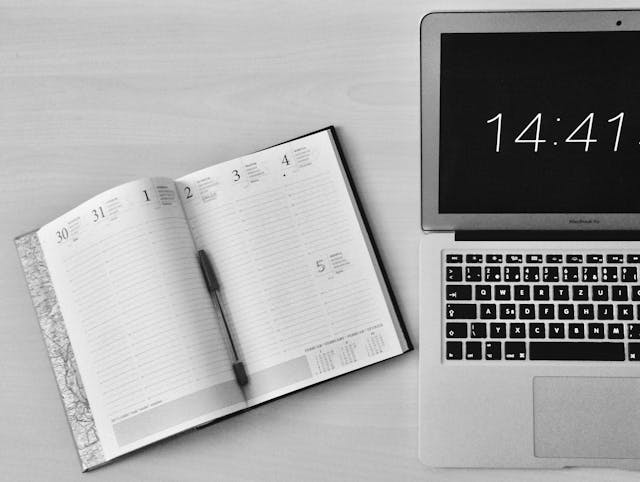Digital technology has rapidly transformed the world, from how we communicate and work to how we live and entertain ourselves. The evolution of digital technology has made it an essential part of our daily lives, affecting almost every aspect of our routines. In this article, we’ll explore the history and impact of digital tech time and offer practical strategies for maintaining a balanced digital lifestyle.
The Evolution of Digital Technology
Digital tech time began as a concept of converting physical data into binary code and has come a long way over the past few decades. The journey has been transformative, from simple computers to complex, networked systems that power modern society.
The Early Days of Computing
In the 20th century, computers started as large, room-sized machines. These early computers performed specific tasks and were accessible to only a few, such as universities and research institutions. The shift from mechanical to electronic computing in the 1940s laid the groundwork for the technological advancements we enjoy today.
The Internet Revolution
The Internet began as a tool for researchers and government organizations. By the mid-1990s, it expanded to the public and became a global network that linked people and businesses. As web technologies advanced, the internet grew to encompass everything from email and social media to e-commerce and streaming platforms.
The Mobile Era
With the introduction of smartphones in the late 2000s, digital technology became mobile. These devices not only allowed us to stay connected with others but also brought computing power, entertainment, shopping, and navigation tools into the palm of our hands. The smartphone revolutionized how we work, socialize, and access information.
The Impact of Digital Technology on Daily Life
Digital tech time has undoubtedly brought many advantages but has also presented challenges that we must address. Let’s break down some of digital tech’s positive and negative impacts on our daily lives.
The Advantages
- Improved Communication: One of the most significant advantages of digital technology is the ability to communicate instantly with anyone, anywhere in the world. Email, video calls, and instant messaging apps have revolutionized personal and professional communication.
- Access to Information: The internet provides us with an almost unlimited amount of information. Everything is just a click away, whether we need to research a topic, learn a new skill, or stay informed about current events.
- Convenience and Efficiency: Digital technology has streamlined many daily tasks, such as shopping, banking, and scheduling appointments. With a few taps on a smartphone or clicks on a computer, we can complete tasks that once took hours or required in-person visits.
The Challenges
- Privacy Concerns: As digital technology has advanced, so have privacy concerns. We leave a digital footprint every time we interact online, which can lead to data theft, identity fraud, and other security breaches if not properly managed.
- Digital Addiction: With the rise of social media, gaming, and streaming services, many people find themselves spending excessive time online. This digital addiction can interfere with real-life relationships, productivity, and even mental health.
- Social Isolation: While digital communication allows us to stay connected virtually, it can sometimes lead to social isolation in the real world. Spending too much time on devices can reduce face-to-face interactions, which is essential for building strong relationships.
How to Achieve a Healthy Digital Lifestyle
Given digital technology’s impact on our lives, it’s essential to find a balance between staying connected and enjoying offline activities. Here are some strategies to help maintain a healthy digital lifestyle.
Set Clear Boundaries
Setting boundaries is one of the most effective ways to manage screen time and reduce digital burnout. Establishing rules for when and how you use your devices can help you stay productive and prevent overuse.
- Scheduled Screen-Free Times: Designate certain times of the day as screen-free, such as during meals or before bedtime. This allows you to focus on family time, relaxation, and hobbies.
- App Usage Limits: Many smartphones come with built-in features that allow you to track and limit the time spent on apps. Set limits for apps like social media, gaming, or shopping to avoid spending excessive time on them.
Engage in Offline Activities
Taking time away from screens to engage in offline activities is crucial for mental and physical health. Try to balance your day with activities that allow you to disconnect from technology, such as:
- Outdoor Activities: Going for a walk, hiking, or simply enjoying nature can help clear your mind and reduce stress.
- Hobbies: Pursuing hobbies like reading, drawing, cooking, or playing an instrument can be a great way to relax without relying on technology.
- Face-to-Face Socialization: While texting and social media can help you stay in touch, nothing beats in-person interactions. Schedule regular meet-ups with friends or family to strengthen real-life connections.
Take Regular Digital Detoxes
A digital detox involves taking a break from screens for a set period, whether for a few hours or a whole weekend. Disconnecting from digital devices helps reset your mind and allows you to focus on other aspects of life. During a detox, you can:
- Focus on Offline Relationships: Spend time with friends and family without distractions.
- Engage in Creative Outlets: Whether it’s painting, writing, or cooking, creative activities can be a therapeutic way to disconnect.
- Practice Mindfulness: Use the detox to practice mindfulness, meditation, or deep breathing to reduce stress and improve mental well-being.
Practice Digital Mindfulness
Being mindful of how we use digital technology can go a long way in ensuring it enhances our lives rather than detracting from it. Digital mindfulness involves conscious of the content we consume and how it affects our mood and behavior. This includes:
- Curating Content: Be selective about the information you consume online. Follow accounts that promote positivity, inspiration, and education, and avoid negative or sensational content that can cause anxiety.
- Setting Boundaries with Social Media: While social media can be a great tool for staying connected, it can also become a source of stress. Set limits on your social media use and unfollow accounts that leave you feeling overwhelmed or anxious.
The Future of Digital Technology
As digital technology continues to evolve, it will bring even more changes to the way we live, work, and interact. From the rise of artificial intelligence (AI) to advancements in virtual reality (VR) and the Internet of Things (IoT), we can expect the digital landscape to become even more interconnected and immersive.
With this increasing integration of technology into every aspect of our lives, keeping balance is crucial. While we can’t escape the digital world, we can make conscious choices that allow us to use it to enhance our lives rather than overwhelm us.
Conclusion
Digital technology has transformed the way we communicate, work, and live. While it offers numerous benefits, including convenience, connectivity, and access to information, it also comes with challenges, such as privacy concerns and digital addiction. We can balance our digital and offline lives by setting boundaries, engaging in offline activities, and practicing digital mindfulness. The key is to use technology to enhance our well-being rather than let it take over.
Frequently Asked Questions
What is Digital tech time?
Digital tech refers to electronic devices and systems that process data, including computers, smartphones, and the Internet.
How do I reduce screen time?
Set app usage limits, designate screen-free times, and prioritize offline activities to minimize screen time.
What is digital addiction?
Digital addiction occurs when individuals excessively use technology, leading to negative impacts on mental and physical health.
How does digital technology affect privacy?
Digital technology can expose personal information online, leading to privacy risks and data breaches.
What is a digital detox?
A digital detox involves taking a break from digital devices to reset habits and reduce stress.






